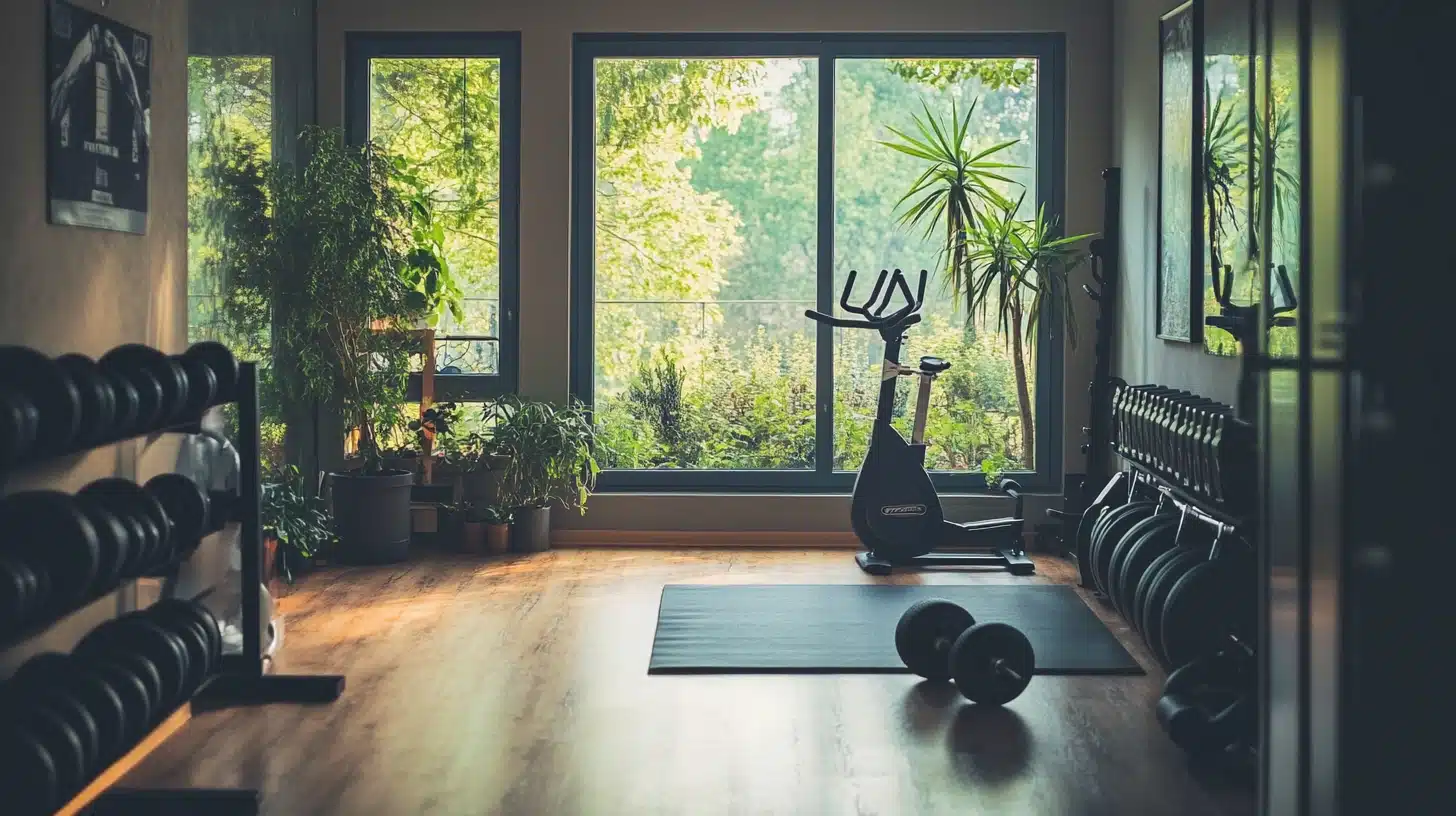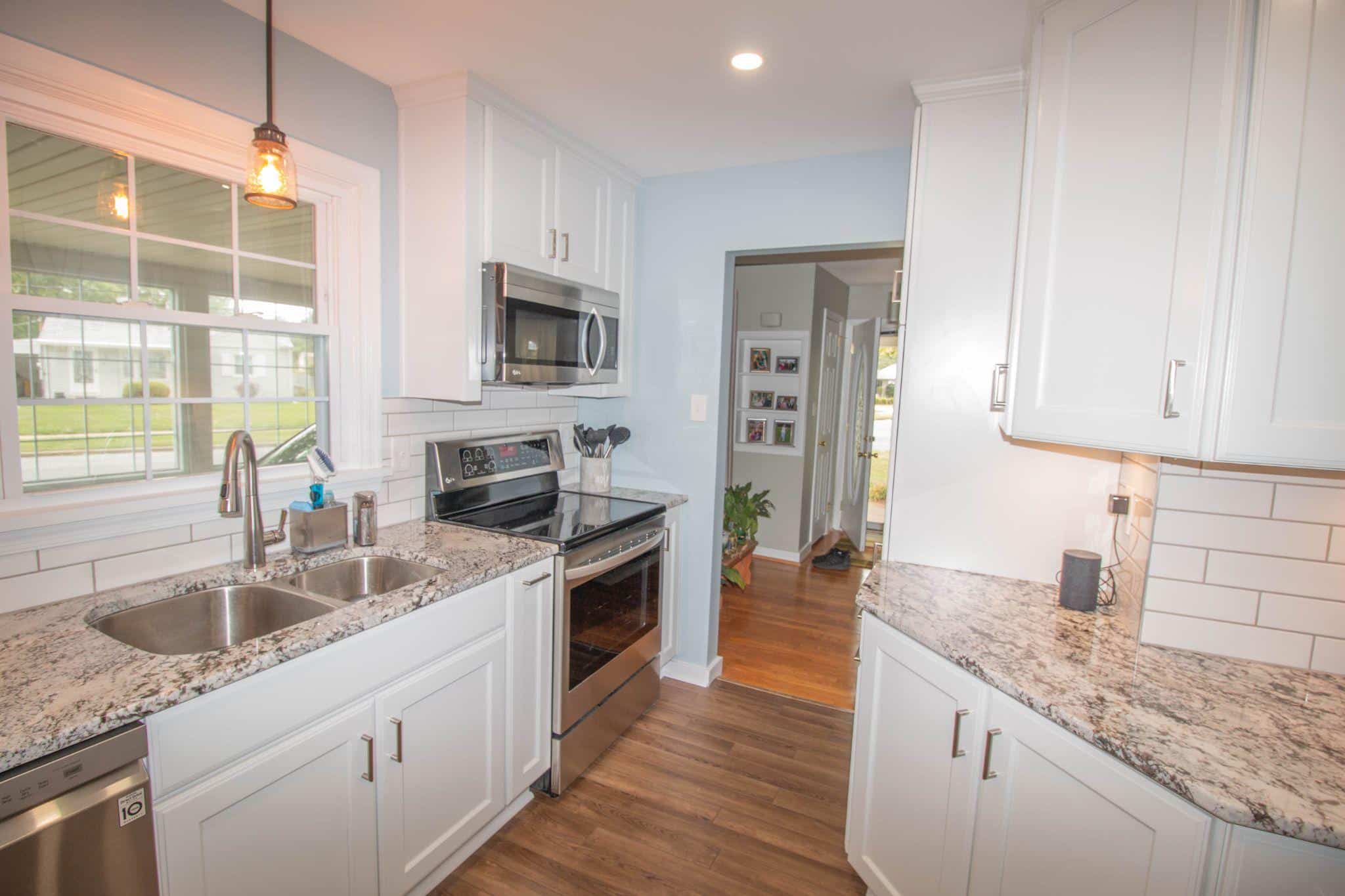Ever thought about ditching the gym membership and working out at home? A compact home gym might be just what you need.
With a few smart choices, you can transform even the smallest space into a fitness haven.
Imagine waking up, grabbing a quick coffee, and stepping right into your personal workout zone. No more excuses about the weather or traffic.
You’ll have everything you need right at your fingertips. Plus, a home gym can be tailored to your specific fitness goals without breaking the bank.
We discussed the benefits of creating a home gym with fitness educators TRAINFITNESS and why it might be a solid idea to get input from a personal trainer when creating your home gym.
Ready to get started? Let’s dive into how you can create an efficient, space-saving home gym that keeps you motivated and on track.
The Benefits Of A Home Gym
Having a home gym provides significant advantages. First, it offers unmatched convenience. Your workout space is always available, day or night. You bypass the hassle of travel and skip waiting for machines. This means more time exercising and less time commuting.
Creating a compact home gym allows customization. You get to choose equipment that aligns with your fitness goals. Whether you’re into cardio, strength training, or yoga, it’s all about what works for you.
A home gym also promotes consistency. With fewer barriers, you’re more likely to stick to your routine. Rain or shine, your gym is just a few steps away.
Budget-wise, a home gym is a solid investment. Traditional gym memberships add up over time. With a home setup, you make an upfront purchase but enjoy long-term savings. Plus, you avoid hidden fees or contract nuisances.
Finally, a home gym boosts comfort. You’re in a familiar environment with no one watching. Wear what you want, play your music, and set your pace. This comfort helps you focus on your workouts, enhancing your fitness journey.
Enjoy the freedom and flexibility a home gym brings.
Consulting A Personal Trainer
Considering a personal trainer can offer key insights for creating a compact home gym. Their expertise helps in tailoring a setup specific to your fitness goals.
Why A Personal Trainer’s Input Matters
Personal trainers possess in-depth fitness knowledge to guide effective gym setups. They know which equipment offers the best workouts for different needs. For example, choosing between dumbbells and resistance bands depends on your strength goals.
Trainers also help design workout plans that optimize the use of limited space. Their advice keeps you focused on exercises that maximize benefits without crowding your gym area.
A trainer’s experience reduces the trial-and-error process. Instead of wasting time on ineffective equipment, follow their guidance to get the most out of your investment.
Trainers can suggest multipurpose equipment like adjustable benches, which save space and increase workout options. Their insight ensures every item in your gym has a purpose, maintaining functionality over clutter.
Finding The Right Personal Trainer
Locating the ideal personal trainer involves some research. Start by checking qualifications. Certified trainers from recognized organizations like NASM or ACE guarantee a standard of knowledge. Read reviews and ask for recommendations from friends who workout at home.
Consultations can help determine compatibility. Discuss your fitness goals and see if their approach aligns with your vision. Look for trainers who offer virtual sessions if meeting in person is tough. This flexibility can be a game-changer for ongoing support.
Cost is an important factor. Compare rates from different trainers to find one that fits your budget. Some may offer package deals, reducing overall costs. Additionally, experience matters; a seasoned trainer might command higher fees but provide valuable insights.
By taking these steps, you’ll find a personal trainer whose expertise can make a big difference in your home gym setup. Their advice can turn a small space into a powerful fitness hub.
Essential Equipment For A Compact Home Gym
Creating a compact home gym requires selecting equipment that maximizes space and effectiveness. Prioritize versatile tools to cover strength, cardio, and flexibility training needs.
Strength Training Tools
Strength training is pivotal for building muscle and improving overall fitness. Consider these essential items:
- Dumbbells: Adjustable ones save space and offer a wide range of weights. Start with a set covering 5-50 pounds.
- Resistance Bands: Lightweight and portable, they provide varying resistance levels for diverse exercises.
- Kettlebells: Ideal for dynamic strength training, focus on core and full-body workouts. Opt for a set suitable for your fitness level, usually 10-30 pounds.
- Pull-Up Bar: Mounted or door-frame versions add bodyweight exercise options. Ensure secure installation to avoid injuries.
Cardio Equipment Options
Cardio is vital for heart health and calorie burning. Choose compact options that fit in small spaces:
- Jump Rope: A simple, effective tool for intense cardio. It takes up minimal space and boosts coordination.
- Treadmill: Look for foldable models with high user ratings. Offers walking or running options without leaving home.
- Stationary Bike: Compact and quiet, it’s perfect for low-impact cardio. Some models even fold for easy storage.
- Rowing Machine: Targets multiple muscle groups while providing an excellent cardio workout. Compact designs are available for home use.
Flexibility And Recovery Aids
Flexibility and recovery are crucial for preventing injuries and improving performance. Include these aids:
- Yoga Mat: Essential for stretching and core exercises. Look for high-density and non-slip materials.
- Foam Roller: Great for self-massage to reduce muscle tightness and promote recovery. Opt for a medium-density roller for general use.
- Stretch Bands: Assist with deeper stretches and flexibility training. Compact and easy to store.
- Massage Balls: Perfect for targeting specific muscle knots and tight areas. Small and easy to incorporate into any space.
A well-equipped home gym tailored to functional, compact needs streamlines your fitness routine, making it more convenient and effective.
Space-Saving Tips And Tricks
Creating a compact home gym involves clever use of space. Efficient hacks and practical gear choices make a big difference.
Multi-Functional Equipment
Utilize gear serving multiple purposes to save space. Adjustable dumbbells replace entire racks of fixed weights, changing weights with a simple dial. Resistance bands come in various tensions, perfect for multiple exercises like squats and presses.
A pull-up bar can often double as an anchor point for suspension trainers or resistance bands. Yoga mats offer a soft surface for stretching and core exercises, and they easily roll up for storage.
Storage Solutions
Get creative with storing your equipment. Wall-mounted racks keep dumbbells and kettlebells off the floor. Stackable bins or storage benches can hide smaller items like resistance bands, jump ropes, or foam rollers.
Look for foldable options, such as collapsing treadmills or rowing machines, that fit under beds or in closets when not in use. Pegboards provide vertical storage for hanging jump ropes or exercise bands, freeing up floor space.
Budget Considerations And Cost-Saving Tips
Creating a home gym doesn’t require breaking the bank. With thoughtful choices, you can build a gym that fits your needs without draining your wallet.
Prioritizing Equipment
Focus on essentials to get started. Adjust the layout and gear based on your goals without overspending.
- Identify must-haves: Prioritize versatile items like adjustable dumbbells or resistance bands which cover multiple exercises.
- Gradual investment: Avoid buying all equipment at once. Start with basics, then expand as needs grow.
- Multi-use equipment: Opt for tools serving multiple purposes. For instance, a kettlebell serves both strength training and cardio.
Shopping Smart
Spend wisely when purchasing equipment. Smart choices go a long way.
- Look for sales: Hunt for discounts during holidays or store clearances. Deal sites often have great bargains on gym gear.
- Buy second-hand: Look at online marketplaces or local listings for gently-used equipment in good condition.
- DIY options: Make some equipment like yoga blocks or sandbags at home. They’re both cost-effective and functional.
Maximize every dollar spent without compromising quality or function.
Conclusion
Creating a compact home gym offers unparalleled convenience and customization tailored to your fitness goals. By consulting a personal trainer, you can optimize your space and equipment choices, ensuring every piece serves a purpose.
Essential items like adjustable dumbbells, resistance bands, and foldable cardio machines maximize both space and effectiveness.
Implement smart storage solutions and budget-friendly strategies to make your home gym functional and efficient. With the right approach, you’ll enjoy a seamless and rewarding fitness journey right in the comfort of your own home.








